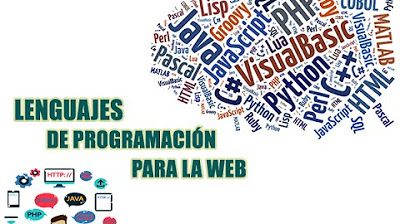ASP NET Core State Management | Quick Explanation
Summary
TLDRThis video explores ASP.NET Core's session state management in a stateless HTTP environment. It discusses various methods to maintain user data across requests, including HttpContext, session items, cookies, query strings, hidden fields, and temp data. Each method has its use cases and limitations, ensuring data persistence and security in web applications. For more insights, visit oneondu.com.
Takeaways
- 🌐 HTTP is stateless, meaning each request is treated as an independent one.
- 👤 To preserve user data between requests, ASP.NET Core offers several methods.
- 🔑 HTTP Context is one way to store user data, like fetching a username.
- 🗄️ Session items are based on IService Collection and help maintain state.
- 🍪 Cookies are a widely used local browser storage method for state management.
- 🔗 Query strings are URL-based and should not be used for private data due to visibility.
- 🚫 Query strings have a limited data volume and are not suitable for large data.
- 📝 Hidden fields store data locally in the browser until the page is alive.
- 🔄 Temp data persists across actions or views but only within the same controller.
- 📅 Temp data lasts until the last usage and then is discarded.
- 📚 For more technical articles, visit oneondu.com.
Q & A
What is the primary characteristic of HTTP that affects session state management?
-HTTP is stateless, meaning every request to the HTTP is treated as an independent one, which affects how session state management is handled.
How does ASP.NET Core manage user data between HTTP requests?
-ASP.NET Core uses several methods to preserve user data between HTTP requests, including HttpContext, Session Items, Cookies, Query Strings, and Hidden Fields.
What is the role of HttpContext in session state management?
-HttpContext is used to fetch user data like the username during each request, providing a way to maintain state information.
How does Session Items work in ASP.NET Core for session state management?
-Session Items is a service based on IService Collection that allows storing and retrieving data specific to a user session.
What are Cookies and how are they used in web-based applications?
-Cookies are a local browser storage mechanism widely used in web applications to store user data that persists across multiple requests.
Why should private data not be passed through Query Strings?
-Query Strings are URL-based and the data is visible to the plain site, making it insecure to pass private data through them.
What is the limitation of using Query Strings for state management?
-The data volume that can be passed through Query Strings is limited, which restricts the amount of information that can be stored and transferred.
How do Hidden Fields differ from Cookies in storing data?
-Hidden Fields store data locally in the browser and are persistent until the page lives, whereas Cookies are stored even after the page is closed.
What is the lifespan of data stored in Temp Data in ASP.NET Core?
-Temp Data in ASP.NET Core lasts across actions or views but only within the same controller. The data is available until the last usage.
What happens to the data stored in Hidden Fields when a user navigates to another page?
-The data stored in Hidden Fields disappears when the user navigates to another page, as it is only persistent for the current page.
Where can viewers find more technical articles related to the discussed topics?
-Viewers can visit oneondu.com for more technical articles related to session state management and other web development topics.
Outlines

此内容仅限付费用户访问。 请升级后访问。
立即升级Mindmap

此内容仅限付费用户访问。 请升级后访问。
立即升级Keywords

此内容仅限付费用户访问。 请升级后访问。
立即升级Highlights

此内容仅限付费用户访问。 请升级后访问。
立即升级Transcripts

此内容仅限付费用户访问。 请升级后访问。
立即升级浏览更多相关视频

How ASP Isotopes is Revolutionizing the Global Isotope Supply Chain

ASP 04 - Planungsentscheidungen konkret – Lernausgangslage

「マジで簡単!」中学生でも1日で2万円稼げるアフィリエイト方法 !I 副業 I I インスタ I

Lenguajes de Programación para la Web

【アダルトアフィリエイト】スマホ1つだけで月収50万円稼ぐ方法【ステップ解説】【ネットビジネス】【FANZA】【DMMアフィリエイト】【無料】

【2024年最新】インスタで稼ぐための誰も知らない裏技をSNS月収2,000万円の男が暴露!【Kくん】

땅 위에 솟아오른 금맥! 그 아래 숨겨진 우리나라 최고의 금광┃일제가 숨겨놓은 한국의 금광┃떨어진 돌멩이조차 함부로 여겨서는 안되는 이유┃황금을 캐는 사람들┃극한직업┃#골라듄다큐
5.0 / 5 (0 votes)
